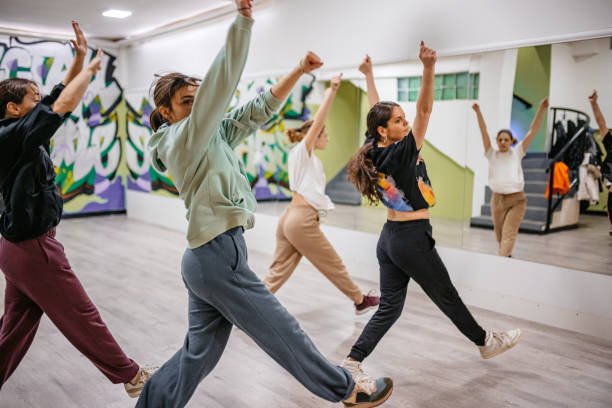Fitness bands have come to the rescue and are now the must-have tools in every bodybuilder’s rack. They are small in size and easy on the pocket; perfect for use at home, in outdoor activities, or as an attachment to gymnasium workouts. Fitness bands are perfect to use in building strength and flexibility and in the rehabilitation of affected body parts because they offer consistent pull throughout the movement’s arcs as opposed to free weights that deliver variable pulls throughout the arcs. In this article, you will discover several exercises with fitness bands that work for various muscle areas and provide you with complete body exercise no matter if you are a novice or a professional.

Squats with Fitness Bands: Strengthen Your Lower Body
Squats are a basic exercise that targets large muscles in your lower limbs, which includes the knees, thighs, hips, and rear-end muscles. Squat exercise is good for strengthening your legs but putting a fitness band on it makes it even more challenging and effective to tone legs.
To do squat exercises with fitness bands, put the band slightly above your knees or below your ankles if you want the specified type of squat. With your feet about one’s shoulder width apart stand still and crouch to the ground, make sure your knees are directly above your toes and your back is straight. Pump your joints to restore circulation, then use that upward motion to push with more force against the band and further engage your muscles.
This exercise is excellent for working out legs and, since the body remains in an upright position, the core muscles have to work to keep you stabilized and balanced during the exercise.
Push-Ups with Fitness Bands: Build Upper Body Strength
If you want to develop strength in your upper body, especially your chest, shoulder, and triceps then the ever-reliable push-up is the way to go. Nevertheless, it is possible to extend this ordinary exercise with the usage of a fitness band, making the push-up ranges even more intriguing.
To do push-ups using fitness bands, you need to gather the band at the back of your shoulder level and hold the ends by your palms. When you are lowering your body to the floor the tension which is given off by the band will be relatively very low but when you are pulling yourself back up the intensity of the tension provided by the band will be very high. The extra load will help your upper body pull much more effectively at your chest and triceps muscles, which leads to greater overall muscle development.
To those who are still experiencing difficulties in doing this kind of exercise, rec, it can still be done with the assistance of push-ups on the knees, or the band can be tightened depending on the workout preference.
Deadlifts with Fitness Bands: Strengthen the Posterior Chain
Deadlift exercise is among the most useful exercise regimes that help work on the posterior chain muscle groups such as the hamstrings, gluteals, and lower back. Whenever doing deadlifts, one is able to vary the resistance levels from the legs to the arms through the fitness bands.
Before doing the deadlift, you want to stand in the middle of the fitness band with your feet wide apart. Take the two ends of the band in your left and, right hand while standing straight with your arms straight, and the back straight. Each time lowering the band close to the ground is done by hinging at the hips, the chest should be upright, and your abdominal muscles contracted. When you are back in the start position, ‘squeeze’ your heels into the floor and feel your glutes and hams pushing off the surface to bring you to the standing position.
This exercise will work on your lower body muscles and back muscles hence improving on them to reduce posture issues.
Lateral Band Walks: Activate Your Hip Muscles
Lateral band walks can provide a great deal of benefits to the muscles around the hips particularly the gluteus medius and gluteus minimus muscles. These muscles act to support the proper movement in locomotive activities such as walking, running, or squatting, and also to stabilize the pelvic girdle.
For lateral band walks, anchor a resistance band on your legs, below the knee, or around the ankle. Lower into a squat position transferring the band from right to left, balancing the bar with smaller steps. Check that your knees are falling outwards to provide the necessary amount of push and try to tighten your tummy muscles to hold your body still. Repeat the stepping sideways for certain steps and then turn around from the previous side.
Lateral band walks can help enhance hip flexibility, and the strength of the glutes and avoid causing certain injuries.
Glute Bridges with Fitness Bands: Activate and Strengthen Your Glutes
These are easy-to-perform exercises that help to work out the glutes, restricts, and belly muscles. To add fight to your legs, it’s likely to put a band about your knee or foot, to really focus on these muscle clusters as you do the exercise.
To perform glute bridge exercises with fitness bands, you need to stand while sitting with the feet flat on the floor, and the knee flexed. Put the band around your knees and push with heels to raise your hips to the ceiling level. Push your heels through the ground, contract your glutes at the top, and retain the position for a second before coming back to the initial position. Make sure you are pushing out against the band to increase the amount you activate your glutes.

Bicep Curls with Fitness Bands: Sculpt Your Arms
Curling the biceps is more or less an archetypal exercise in terms of training the arm muscles. They work on the biceps more and incorporating a fitness band makes the movement heavier and thus more efficient.
To do bicep curls with the bands stand in the middle of the bands and space your feet about shoulder width apart. With your palms forward and the elbows flexed, take the ends of the band with your fingers. When curling the band up to the shoulders ensure that the elbows remain fixed and are in close vicinity to your body, and your biceps are fully contracted. Gradually let the band down to the start position while still holding the tension.
This fitness band bicep curl exercise is perfect for giving the upper arms a tone, and a firmer look as well as helping build muscle definition.
Conclusion
exercises with fitness bands are a great supplement to the typical cardio exercises and allow working on many muscles at once. The level of resistance from the fitness bands raises the calisthenics intensity making squats, push-ups, deadlifts, bicep curls, etc., more difficult and thus useful. In general, fitness bands are a flexible and inexpensive tool no matter if you are building strength, focused on mobility exercises, or a person with an injury that needs the support of this kind of device. Using different exercises with fitness bands in the process can add convenience to workout effectiveness and offer the required amount of pressure to make your body suitable.
FAQs
Q1. What are fitness bands, and how do they work?
Ans: Fitness bands on the other hand are stretched rubber or latex straps that offer opposition to motion during exercises. It comes in different gauges, widths, and sizes, which dictate its rigidity as well: The higher the gauge the thinner and less stiff, and the longer the length the more rigid it is going to be. The bands develop resistance when stretched which contributes to the bulkiness of muscles to offer a better workout during exercises to enhance strength, flexibility as well as perseverance or stamina.
Q2. Can I use fitness bands for a full-body workout?
Ans: Fitness bands are proficient in giving total body exercise. Others can isolate all major muscle groups, the legs, arms, back, and abdominals. In other words, fitness bands can be used when performing squat bottoms, push-ups, bicep curls, glute bridges, and many others to target multiple muscles at a go.



